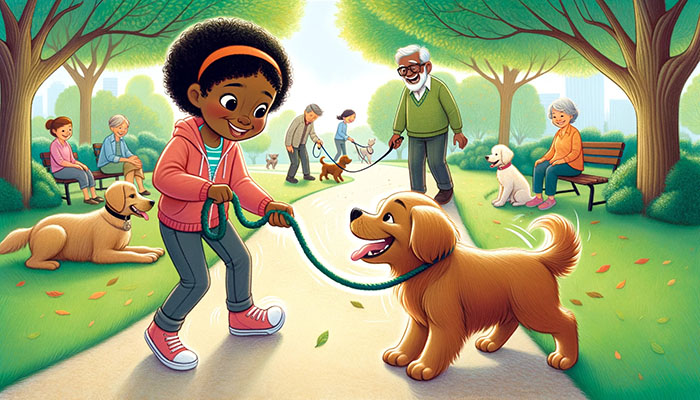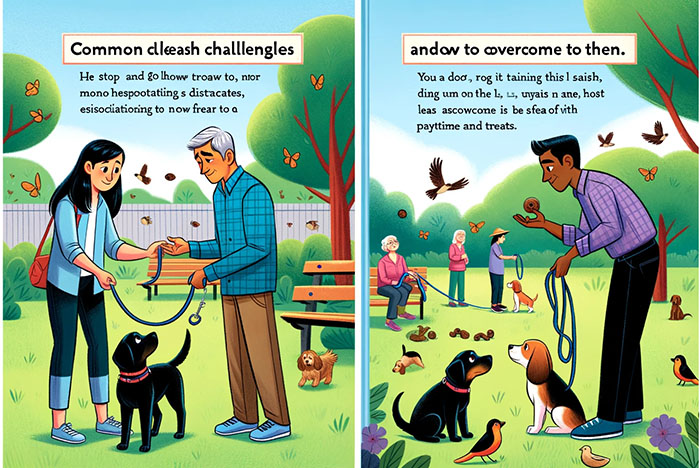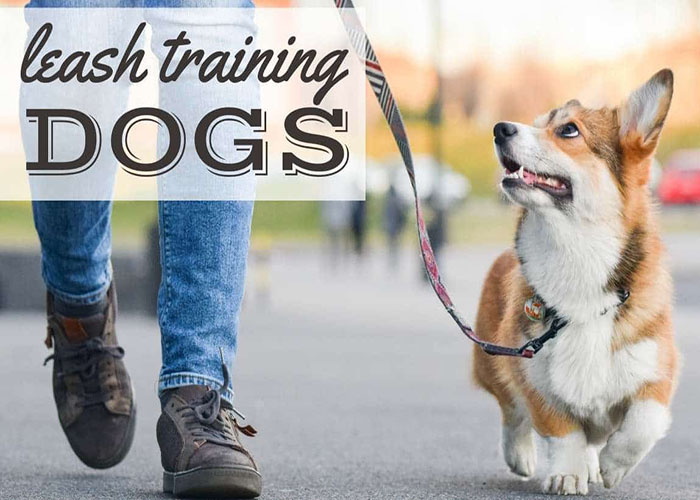Leash training is an essential skill for any dog owner. It not only ensures the safety of your dog but also makes walks more enjoyable for both you and your furry friend. However, leash training can be a challenging task, especially if you have a high-energy or stubborn dog. But with patience, consistency, and the right techniques, you can teach your dog to walk nicely on a leash. In this article, we will discuss how to master leash training and have a well-behaved walking companion.

Understanding the Basics of Leash Training
Before diving into the specifics of leash training, it’s important to understand the basics. First and foremost, dogs are pack animals, and they naturally follow a leader. As their owner, it’s your responsibility to establish yourself as the leader and set rules and boundaries for your dog. This is crucial for successful leash training.
The Right Equipment
The first step in leash training is to choose the right equipment. A standard leash that is 4-6 feet long is recommended for most dogs. Retractable leashes may seem convenient, but they give your dog too much freedom and can make it difficult to control them. Additionally, using a harness instead of a collar can prevent neck injuries and make it easier to control your dog.
Start Indoors
Before taking your dog outside for a walk, start practicing indoors. This will help your dog get used to the feeling of being on a leash without any distractions. Begin by attaching the leash to your dog’s collar or harness and let them drag it around while supervised. This will allow them to get comfortable with the leash and prevent them from associating it with negative experiences.
Positive Reinforcement
Positive reinforcement is key when it comes to leash training. Dogs respond best to rewards and praise, so make sure to have plenty of treats on hand. Every time your dog walks nicely on the leash, reward them with a treat and praise. This will reinforce good behavior and make your dog more likely to repeat it.
See more about Clicker Training: Using Sound for Dog Command
Techniques for Leash Training
Now that you have a basic understanding of leash training, let’s discuss some techniques that can help you master it.

The Stop and Go Method
This method is great for teaching your dog to walk beside you instead of pulling ahead. Start by walking with your dog on a loose leash. As soon as they start to pull, stop in your tracks and wait for them to come back to your side. Once they do, continue walking. Repeat this every time your dog pulls on the leash. This teaches them that pulling will not get them where they want to go and that walking beside you is the only way to move forward.
The Turn Around Method
Similar to the stop and go method, the turn around method also teaches your dog to walk beside you. Start by walking with your dog on a loose leash. When they start to pull, turn around and walk in the opposite direction. This will catch your dog off guard and make them follow you. Continue walking in the new direction until your dog is walking beside you again. This method requires patience and consistency, but it can be very effective in teaching your dog to stay by your side.
Common Challenges and How to Overcome Them
Leash training can be a frustrating process, and it’s common to face challenges along the way. Here are some common problems and how to overcome them.
Pulling on the Leash
One of the most common challenges when leash training is dealing with a dog that constantly pulls on the leash. As mentioned earlier, using the stop and go or turn around methods can help teach your dog to walk beside you. Additionally, make sure to keep the leash loose and avoid pulling back on it, as this can encourage your dog to pull even more.
Distractions
Dogs are naturally curious creatures, and it’s common for them to get distracted during walks. This can make leash training difficult, as they may want to chase after other animals or investigate interesting smells. To overcome this, make sure to keep your dog on a short leash and use the stop and go method to regain their attention. It’s also important to practice in different environments with varying levels of distractions to help your dog learn to focus on you.
Fear or Anxiety
Some dogs may have a fear or anxiety towards leashes, which can make leash training challenging. If your dog shows signs of fear or anxiety, such as cowering or trying to escape, it’s important to address these issues before starting leash training. You can do this by gradually introducing your dog to the leash and associating it with positive experiences, such as treats and playtime.

Frequently Asked Questions
What age should I start leash training my dog?
It’s best to start leash training your dog as early as possible, ideally when they are still a puppy. This will help them get used to the feeling of being on a leash and make the training process easier.
How long does it take to leash train a dog?
The time it takes to leash train a dog varies depending on the individual dog and their previous experiences. Some dogs may pick up leash training quickly, while others may take longer. Consistency and patience are key, so don’t get discouraged if it takes some time for your dog to master leash training.
Can I use a retractable leash for leash training?
No, it’s not recommended to use a retractable leash for leash training. These leashes give your dog too much freedom and can make it difficult to control them. Stick to a standard leash that is 4-6 feet long for leash training.
My dog keeps biting the leash, what should I do?
Biting the leash is a common behavior in puppies and can be a sign of teething. If your dog continues to bite the leash, try using a different material, such as a leather or nylon leash, and make sure to provide them with appropriate chew toys.
My dog pulls on the leash even after training, what should I do?
If your dog continues to pull on the leash even after training, it’s important to address the underlying cause. It could be due to excitement, fear, or lack of exercise. Consult a professional trainer for further guidance.
Conclusion
Leash training is an essential skill for any dog owner, and with patience and consistency, you can teach your dog to walk nicely on a leash. Remember to choose the right equipment, start indoors, and use positive reinforcement. Be prepared to face challenges along the way, but with the right techniques, you can overcome them and have a well-behaved walking companion. Happy training!

